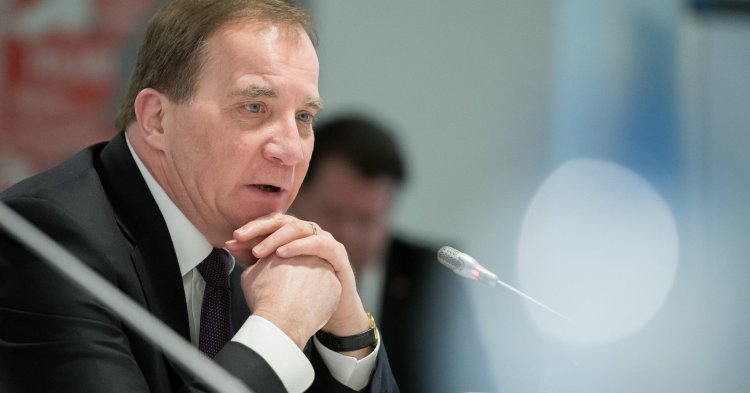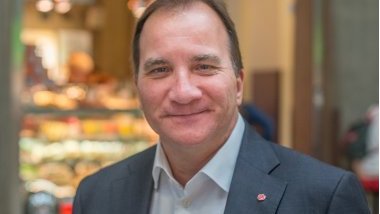Swedish elections have traditionally been a race between two rivalling blocs; the red-greens consisting of the Social Democrats, the Left Party and the Greens on one hand, and the centre-right alliance consisting of the Moderates (conservatives), Christian Democrats, Liberals and Centre Party on the other. Before the Sweden Democrats entered the stage in 2010, either of the blocs would always obtain a majority of the seats in parliament, thus forming a government. This race is commonly known as the bloc system. Tonight, the seven traditional parties obtained votes as follows: Social Democrats 28.4% (-0.2%), Left Party 7.9% (+2.2%), Greens 4.3% (-2.4%), Moderates 19.8% (-3.5%), Centre Party 8.6% (+2.5%), Liberals 5.5% (+0.1%) and Christian Democrats 6.4% (+1.8%). The red-greens thus obtained 40.6% of the votes and the centre-right alliance 40.3%, resulting in a mere difference of one seat in the parliament. Both blocs consider themselves the winner, although both have lost significantly in terms of parliamentary seats to the Sweden Democrats. Although parties from both blocs have declared victory and signalled the intention of their bloc forming the next government, neither bloc is actually even near a majority as the Sweden Democrats in turn obtained a record 17.7%.
The deadlock is further fed by prime minister Stefan Löfvén’s reluctance to form yet another minority government. During his election night speech, he stated that his wish was instead to form a majority government. He called for an abolishment of the bloc system, arguing that it was the main source of political deadlock, and that this election night should be regarded as “the funeral of bloc politics”. Prime minister Löfvén is well known for disliking the bloc system and preferring a collaboration between his own party and the Liberals, the Greens and the Centre Party. This gives the ball to Liberal leader Jan Björklund and Centre Party leader Annie Lööf who have so far expressed their intention to form a government with their traditional bloc after tonight’s election.
The elections were predicted to become catastrophic for the governing parties, the Social Democrats and the Greens. Opinion polls showed figures as low as 23 % for the Social Democrats – a party that has traditionally been able to reach well above 30 % of the votes. However, the party managed to get 28.4 % of the votes, maintaining a clear first place while it’s still its worst election result in one hundred years. Even the second biggest party, the Moderates, were predicted to get an exceptionally poor result of around 17% but climbed up to 19.8%. Both the Social Democrats and the Moderates were thought to lose tremendous amounts of voters to the anti-establishment far-right Sweden Democrats, who were up at 25% in polls that occasionally even predicted their share of votes to become greatest of all the parties. Although their share of 17.7% makes them the undisputable winner as compared to last election (12.9%), the Sweden Democrats concluded the elections with mixed feelings as they had hoped for at least second place and more than 20% of the votes. The party leader, Jimmie Åkesson, has expressed an interest to form a government with the Moderates, but the moderate leader Ulf Kristensson has only shown intentions of sticking with the centre-right alliance. Sweden’s far-right is thus most likely to remain a marginalised party with their influence deliberately limited by the other parties.
The fate of the small parties had also long been a topic of speculation. The Swedish parliamentary elections come with a rule that parties need to obtain more than 4% of the votes in order to enter the parliament. Both the Greens and the Christian Democrats were seriously struggling to remain above this limit in the opinion polls throughout the summer. Extreme heat and forest fires brought a rise in poll results for the Greens, who have a clear pro-climate agenda. However, this didn’t bring the party any more than 4.3% of the votes. Early during the election night there even seemed to be a risk of them not reaching the 4%, which would have turned the election result to the clear advantage of the centre-right alliance. The Christian Democrats on the other hand made a huge leap from predicted levels of around 3% to reach their 6.4%.
Never before has a parliamentary election outcome in Sweden left so many open questions as it did tonight. Whichever of the two traditional blocs would form a government given this outcome, it would need the support of the Sweden Democrats to realise its budget plans. However, all seven traditional parties in the parliament have so far rejected any formal collaboration with the Sweden Democrats due to the party’s neo-Nazi roots and far-right agenda. With both traditional blocs losing seats, but both yet proclaiming victory, the process of forming a government starts from a deadlock. In theory, it could indeed still come to a tie between the blocs, as international votes from Swedes living abroad still remain uncounted. Will the Social Democrats succeed in appealing to the Liberals and Centre Party and form a cross-bloc government, or will they try to form a red-green government as this bloc was after all the larger of the two traditional ones? Or will the centre-right alliance led by the Moderates succeed in forming a government with one less seat than the red-greens? Or will the Moderates turn to the Sweden Democrats after all, and form a government similar to the Austrian ÖVP-FPÖ coalition? Neither can we completely rule out a coalition between the Social Democrats and Moderates, similar to the German GroKo coalition currently in government.



Follow the comments: |
|
